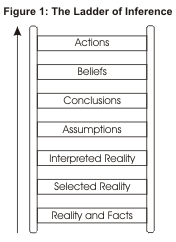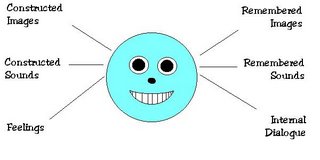Questioning Techniques - Asking questions effectively
If you put the wrong information in, you'll get the wrong information out is often said in relation to computer systems:
Asking the right question is at the heart of effective communications and information exchange.for example, you can gather better information and learn more, you can build stronger relationships, manage people more effectively and help others to learn too.
Following on in the series of interpersonal communication posts we will look at some common questioning techniques, and when (and when not) to use them:
Open vs. Closed Questions
Closed question - receives a single word or very short, factual answer. “Are you thirsty?” vs "How do you feel about grabbing a drink?" “Where do you live?” vs "What do you do for accomodation?"
CLOSED - One aims for a 'yes' or 'no'.
OPEN - The key here is the opening clause. The more inviting question gives the questionee an opportunity to describe in detail:
"How do you ..[feel|think|like|see]"
"What do you ..[do|feel|think|like|see]"
"What did you ..[do|feel|think|like|see]"
"How would you ..[describe|explain|feel|think|like|see]"
"Why ..[do|did|is] .. in your opinion"
Open questions are good for:
- Developing an open conversation: “What did you get up to on vacation?”
- Finding our more detail: “What else do we need to do to make this a success?”
- Finding out the other person’s opinion or issues: “What do you think about those changes?”
Closed questions are good for:
- Testing your understanding, or the other person’s: “So, if I get this qualification, I will get a rise?”
- Concluding a discussion or making a decision: “Now we know the facts, are we all agreed this is the right course of action?”
- Frame setting: “Are you happy with the service from your bank?”
A misplaced closed question, on the other hand, can kill the conversation and lead to awkward silences, so are best avoided when a conversation is in full flow.
Funnel Questions
This technique involves starting with general questions, and then narrowing to the target with each level. It’s often used by detectives taking a statement from a witness. Start with closed questions. As you progress through the tunnel, start using more open questions:
“How many people were involved in the fight?”
“About ten.”
“Were they kids or adults?”
“Mostly kids.”
“What sort of ages were they?”
“About fourteen or fifteen.”
“Were any of them wearing anything distinctive?”
“Yes, several of them had red baseball caps on.”
“Can you remember if there was a logo on any of the caps?”
“Now you come to mention it, yes, I remember seeing a big letter N.”
Using this technique, the detective has helped the witness re-live the scene and gradually focus on a useful detail.
Much more effective than asking, “Are there any details you can give me about what you saw?”
Funnel questions are good for: - Finding out more detail about a specific point: “Tell me more about Option 2.”
- Gaining the interest or increasing the confidence of the person you’re speaking with: “Have you used the IT Helpdesk?”, “Did they solve your problem?”, “What was the attitude of the person who took your call?”
Probing Questions
Asking probing questions is another strategy for finding out more detail.
“When exactly do you need this report by, and do you want to see a draft before I give you my final version?”,
or to investigate whether there is proof for what has been said,
“How do you know exactly that the new database can’t be used by the sales force?”
“What exactly do you mean by fast-track?”
“Who, exactly, wanted this report?”
Use exactly to get as much information as possible.
Probing questions are good for:
- Gaining clarification to ensure you have the whole story and that you understand it thoroughly; and
- Drawing information out of people who are trying to avoid telling you something.
Leading Questions
Leading questions try to lead the respondent to your way of thinking. They can do this in several ways:
- With an assumption: “How late/early do you think that the project will deliver?” This assumes that the project will certainly not be completed on time.
- By adding a personal appeal to agree at the end: “Lori’s very efficient, don’t you think?” or “Option 2 is better, isn’t it?”
- Phrasing the question so that the “easiest” response is “yes” (our natural tendency to prefer to say “yes” than “no” plays an important part in the phrasing of referendum questions): “Shall we all approve Option 2?” is more likely to get a positive response than “Do you want to approve option 2 or not?”
- A good way of doing this is to make it personal. For example, “Would you like me to go ahead with Option 2?” rather than “Shall I choose Option 2?”
- Giving people a choice between two options, both of which you would be happy with, rather than the choice of one option or not doing anything at all. Strictly speaking, the choice of “neither” is still available when you ask “Which would you prefer of A or B”, but most people will be caught up in deciding between your two preferences.The alternative if you have preference for A is, "Will I choose A or not?"
Note that leading questions tend to be closed.
Leading questions are good for:
- Getting the answer you want but leaving the other person feeling that they have had a choice.
- Closing a sale: “If that answers all of your questions, when would you like us to deliver?”
Rhetorical Questions
They’re really just statements phrased in question form: “Isn’t John’s design work so creative?”
People use rhetorical questions because they are engaging for the listener — as they are drawn into agreeing (“Yes it is and I like working with such a creative colleague”) — rather than feeling that they are being “told” something like
“John is a very creative designer”. (To which they may answer "So What?")
Rhetorical questions are even more powerful if you use a string of them. “Isn’t that a great display? Don’t you love the way the text picks up the colors in the photographs? Doesn’t it use space really well? Wouldn’t you love to have a display like that for our products?”Rhetorical questions are good for:
Using Questioning Techniques
You have probably used all of these questioning techniques before in your everyday life, at work and at home. But by consciously applying the appropriate kind of questioning, you can gain the information, response or outcome that you want even more effectively.
Questions are a powerful way of:
- Learning: Ask open and closed questions, and use probing questioning.
- Relationship building: People generally respond positively if you ask about what they do or enquire about their opinions. If you do this in an affirmative way “Tell me what you like best about working here”, you will help to build and maintain an open dialogue.
- Managing and coaching: Here, rhetorical and leading questions are useful too. They can help get people to reflect and to commit to courses of action that you’ve suggested: “Wouldn’t it be great to gain some further qualifications?”
- Avoiding misunderstandings: Use probing questions to seek clarification, particularly when the consequences are significant. And to make sure you avoid jumping to conclusions.
- Diffusing a heated situation: You can calm an angry customer or colleague by using funnel questions to get them to go into more detail about their grievance. This will not only distract them from their emotions, but will often help you to identify a small practical thing that you can do, which is often enough to make them feel that they have “won” something, and no longer need to be angry.
- Persuading people: No one likes to be lectured, but asking a series of open questions will help others to embrace the reasons behind your point of view. “What do you think about bringing the sales force in for half a day to have their laptops upgraded?”



